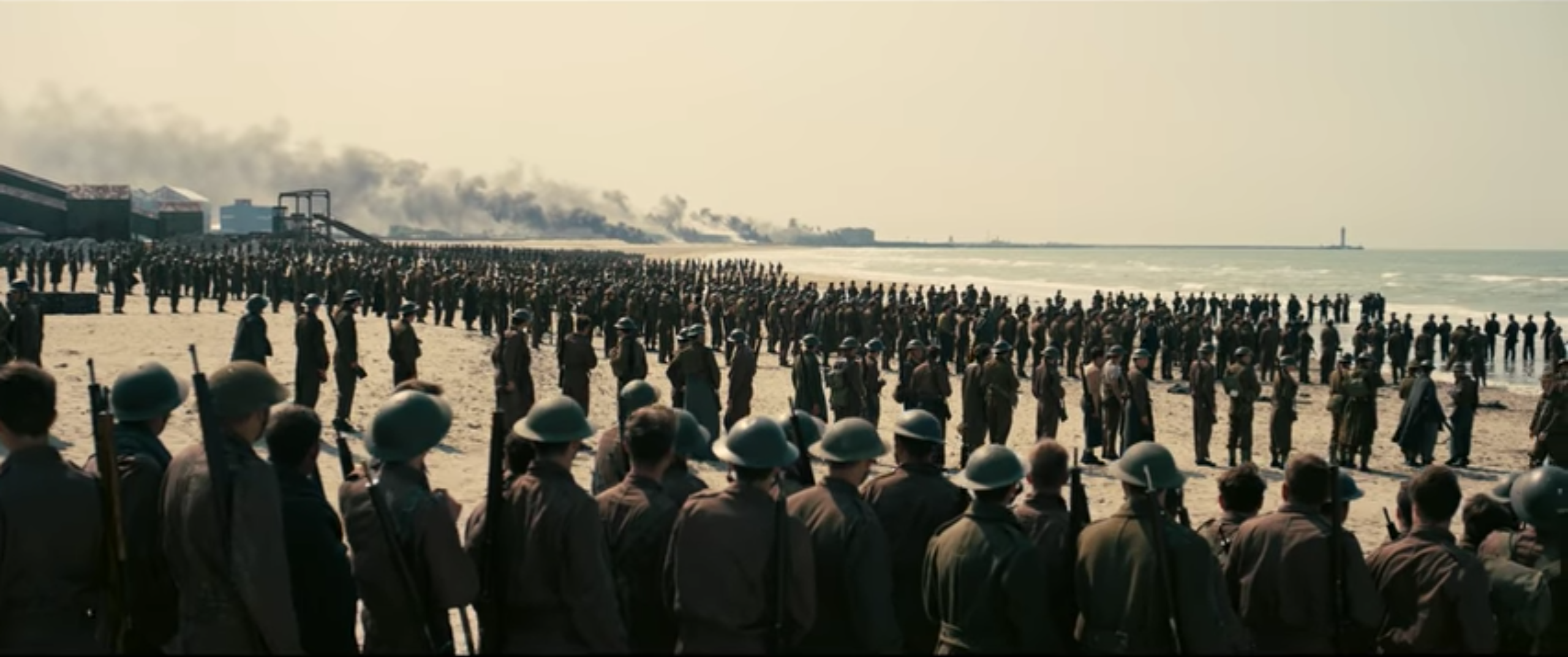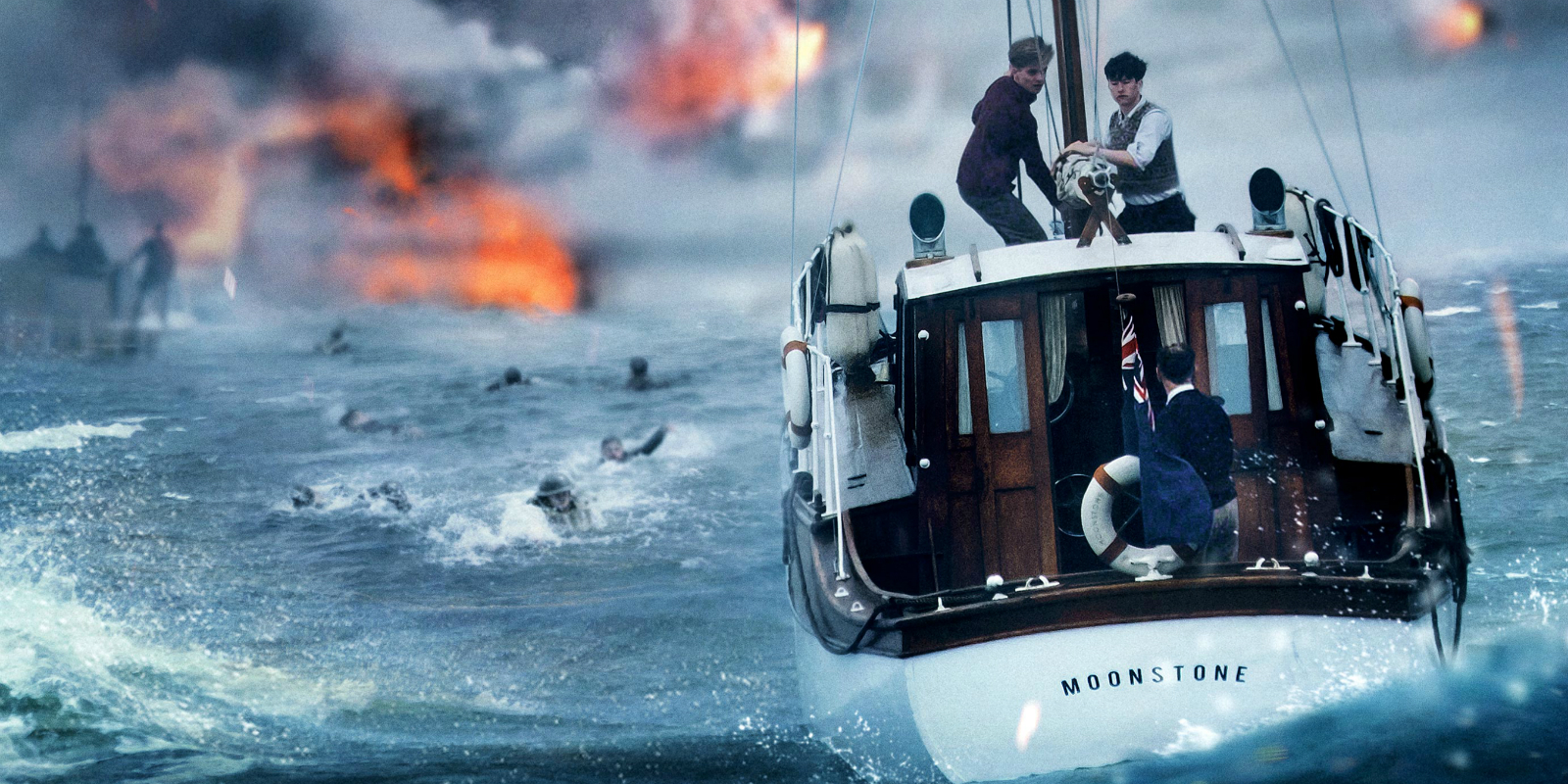While the world cinéphiles are busy criticising, deconstructing, analysing, praising the latest Nolan film, the Asinovola newsroom has not been idle. We have indeed experienced a film-critic battle, fought with differing opinions and film-geek ardour.
The world is facing farce worse problems, no doubt, but we thought you might appreciate our tiny contribution to the critic of one of the “hottest” pictures of this autumn. And if you wish to fuel our will to talk a lot about nothing, comment and share!
DUNKIRK – as seen by Margherita Fontana
Dunkirk is an almost great film. The imperfection resides in the striking incoherence between the courageous director’s ability and the evergreen rhetoric, something we would have happily done without. The miraculous rescue of the British army from the Atlantic beaches of Dunkirk in France in 1940 is declined through three different temporal-space dimensions, each one corresponding to a natural element (the earth, the sky, the water). The multifaceted cutting of the three plots allows to escape from the traditional narrative of a war film. In approaching a retreat, instead of a glorious victory or a tragic defeat, Nolan describes the war as a struggle for survival, fought against a literary and morally invisible enemy. Real and cruel as a desert are instead the surroundings, that leave everyone alone in front of mortal danger. So far so good. In my opinion, trouble begins when the characters stop struggling for life and start talking about the film topic: the easy and good-old rhetoric is back again and it weakens the film innovative potential. A film that maybe should have left us in the end on the desolate beaches on the Atlantic, instead of safe, at home, triumphantly welcomed despite the defeat.
DUNKIRK – as seen by Yorgos Kostianis
Impressively immersive right from the get-go, Dunkirk catapults the audience into the absurd chaos of the Second World War. 400,000 Allied soldiers trapped on the northern coast of France, facing the overriding fear of the advancing German army.
The overwhelming hopelessness of the Allies’ position is palpably felt in the film’s opening stretch. Hans Zimmer’s absurdly overbearing music, virtually bellows emotional commands at viewers, gluing them to their seats, as the incessant clacking of gears weaves in and out of the noise of breaking waves, copious explosions and boisterous aircraft engines.
Nolan’s penchant for inventive storytelling, which often trades in crafty puzzles, is foregrounded in Dunkirk. The film parses a week of combat into three different timelines, divided in themes of land, sea and air, and gives each a time frame (a week, a day and an hour, respectively) that corresponds to its speed.
Instead of simply crosscutting between the action of these three main components, the director employs the kind of chronology-bending antics that epitomize some of his earlier works like Memento and Inception. This narrative structure, inadvertently, stunts the power of the few instances of interpersonal contact, such as the shell-shocked soldier (Cillian Murphy) whose subplot is so quickly side-lined that barely gathers emotional force. By the same token, the contrivance of the Air Force chapter scenes — visually and sensuously fascinating as they may be, staring a criminally underused Tom Hardy — undermines the believability of an otherwise very realistic film.
To the director’s credit, his choice of portentous editing and of featuring scarcely any dialogue is meant to heighten the sense of bewilderment facing the Allies. Nolan urges, in that manner, the viewers to fill in the blanks of the characters’ inner lives with their own. He forces the audience to walk in the muddy boots of those harrowed soldiers, who keep escaping the jaws of death by the skin of their teeth and yet hold on to their survival instincts. That Nolan wrenches grace notes out of such fleeting bits of horror is a testament to his intermittent skills as an image-maker. As with his recent spate of blockbusters, however, his fussy ambition ultimately results in aesthetic and thematic sloppiness.
DUNKIRK – as seen by Carlotta Magistris
Remove from Christopher Nolan’s cinema everything which characterises it: catchy plots full of cliff-hanger twists that arise questions more easily found on Yahoo answers than in yourself, thick and easy screenplays, huge casts and a kitsch taste – let us not forget the elevator in Inception. Keep the passion for temporal twists and add some patriotism, you’ll have Dunkirk, his last work, a war movie with a quite dull plot shot in a surprising and atypical way: no hero to be linked to, no bloodshed. Powerful close-ups mainly on Fionn Whitehead’s beautiful British face – born in 1997 – combine with suggestive overviews, long-lasting silences sometimes covered by the amazing soundtrack by Hans Zimmer (as usual), huge cast names – above all, Tom Hardy – never too highlighted and an unusual end. Christopher Nolan is no longer the enfant prodige of the American cinema, a label today attributed to an almost homonymous Canadian guy, and he heads towards a more defined personality as a director. For now, it’s a happy end.
DUNKIRK – as seen by Elena Saltarelli
Christopher Nolan, on his latest work, found it necessary to escape completely from the rest of his filmography: with Dunkirk, he offers us a risky product under many points of view (first the topic now abused of war) but mediated through the use of an aesthetic research with maniacal traits, made possible by a super consolidated troupe and a production budget that is estimated at up to 100 million dollars. There are so many variables in the way, and the risks are directly proportional to them: the risk of leaping into patriotism, into superficiality, or into a war-documentary. Nolan structures his film circumnavigating all the clichés that can be attributed to a genre like this, giving us 106 minutes of a lyrical ballad about beauty and violence, in which the historical theme is sublimated by a series of ambient accents that can’t be ignored at all. Since the very beginning, the spectator is forced to immerse into the swarm of young soldiers, and he is equally forced to feel that basic instinct of survival that will haunt him until the end; a relentless feeling that doesn’t stop and that flows with the flow of the battle, fought against an enemy that doesn’t have a name and that can be anyone. A tragedy that, in my opinion, should have been free from any dialogue: the explanations useful to understand the pain can’t come to us from a voice-over, but they must be perceived topically through the gaze, the pose and the action channel; also through (and mostly) the attempt of elevating the natural elements, as fire or water, to the rank of characters, or more concretely, beasts, that take and carry away everything they can, when they can. Nolan had a big opportunity, punctually missed in the final, where he couldn’t refrain to say what was already understood: just the final look of our pseudo-main character saved him. A look that gets rid of the dull grip of patriotism, a doubtful look, that needs no explanation because there aren’t any; that wonders about the heroism propaganda, the one that promised so much but maintained nothing, that forced to die a useless death, and then to be greeted by oblivion.









Commenti recenti